Sony A99 II Hands-On First Impressions: Time with Sony’s new professional speed demon
posted Tuesday, September 20, 2016 at 8:16 AM EDT
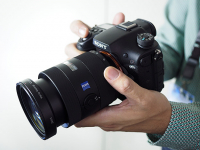
During an hour-long media briefing and hands-on session at Photokina following the Sony A99 II’s surprise unveiling on Monday, I was able to get some hands-on time, albeit just briefly, with the new flagship A-mount SLT camera.
The primary topic of discussion in the meeting was the A99 II’s impressively-spec’d autofocus system. In a way, blending a traditional DSLR/SLT’s dedicated autofocusing sensor with the A7R II’s on-chip phase detect technology, the Sony A99 II appears to offer extremely fast AF performance as well as generously wide frame coverage for even more flexibility when shooting. With the combined 79 phase-detect points and 399 on-chip phase-detect sensors, the A99 II has a total of 323 user-selectable focusing points — significantly more fine-grain adjustability, at least on paper, than even the flagship DSLRs from Canon and Nikon.
Coupled with the A99 II’s autofocus is its sheer processing horsepower that offers up to 12 frames per second continuous shooting at the full 42MP resolution, even with RAW capture enabled. Buffer depths are impressively deep as well, with a claimed 54 frames for RAW and 60 frames for JPEGs.
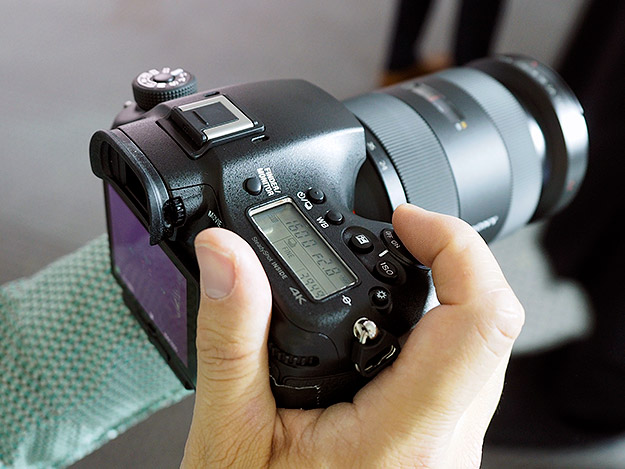
During the hands-on shooting session, which was only about 15-20 minutes long, we were presented with a pair dancers and capoeira-style performers. Shooting with an A99 II and 70-200mm f/2.8, the camera felt light, nimble and extremely responsive. The autofocus system was very quick and seemed to lock onto targets as well as track them fairly well.
Unfortunately, we weren’t able to take the images home with us nor inspect the image quality on a larger screen, but my initial feel is that the A99 II did a respectable job of maintaining focus on these sporadically-moving subjects. I was primarily using the Lock On Autofocus Expanded Flexible Spot mode, and the camera seemed to keep up with the moving subjects quite well, though I don’t believe it was perfect every time. Here, the camera’s AF system utilizes a primary phase-detect point along with surrounding on-chip AF "helper" points to maintain focus if and when a subject moves out from under the central point.

The full 323 selectable AF points covers an incredible amount of the frame, so it’s very handy when you to need to fine-tune your AF point selection to fit your particular composition. I did not have a chance, however, to test and compare the AF tracking capabilities of the combined 79 hybrid cross points against the outermost on-chip-only phase-detect AF points.
The burst speed on the new A99 II feels very quick. The full 12fps burst puts the camera squarely up in the professional category, and the fact that you can get full 42MP RAW images at this burst speeds is incredible. The burst speed does slow down a bit or fluctuate if the camera has trouble maintaining focus, but in general, the camera felt quick and nimble, firing off burst after burst.
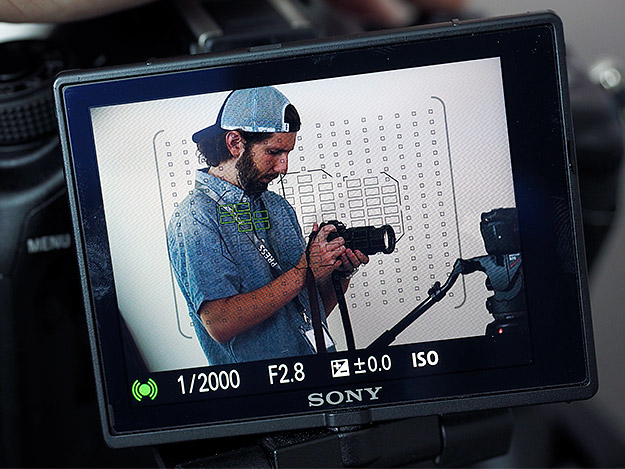
The A99 II also supports a slower 8fps burst mode, called Continuous High ("Continuous High+" is the full 12fps mode), which provides minimal display lag in the electronic viewfinder. There’s a brief simulated blackout time, similar to that on the Sony A6300, which helps when tracking faster moving subjects with the EVF.
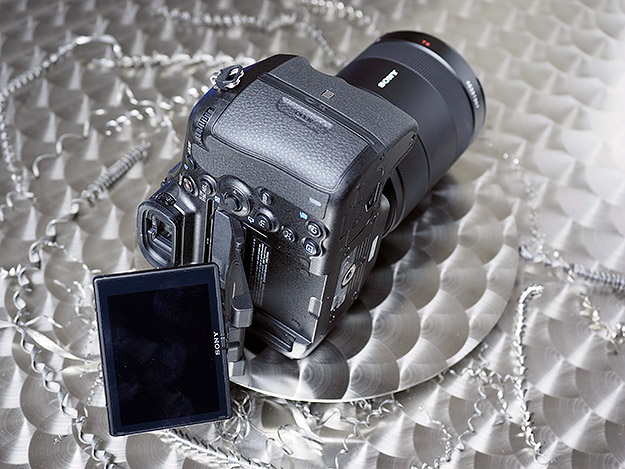
Ergonomically, the A99 II pretty much feels exactly how I remember the A77 II, with a robust, highly contoured handgrip. It feels very compact for a full-frame professional “DSLR,” and surprisingly lightweight, all things considered. The A99 II with the 70-200mm f/2.8 SSM II lens did not feel overly bulky or heavy, as I seem to think whenever I pickup, say, a Canon 5D-series and their 70-200mm f2.8L lens.
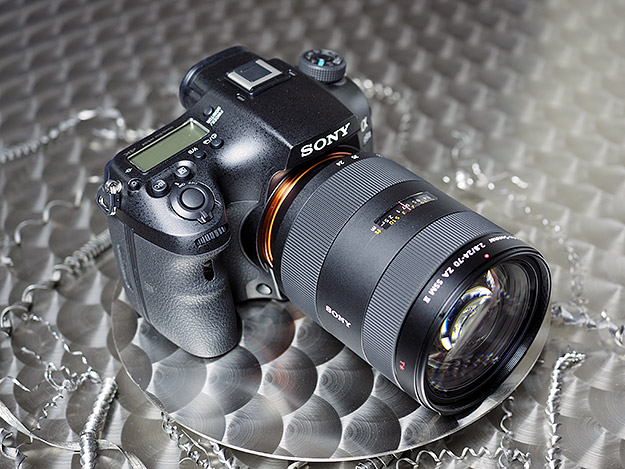
That’s all for now. As I said, this was a very brief hands-on media session with the new camera. We’re certainly anxious to get our hands on a final production model so we can do some in-depth shooting and, of course, our full laboratory testing. Stay tuned for more!